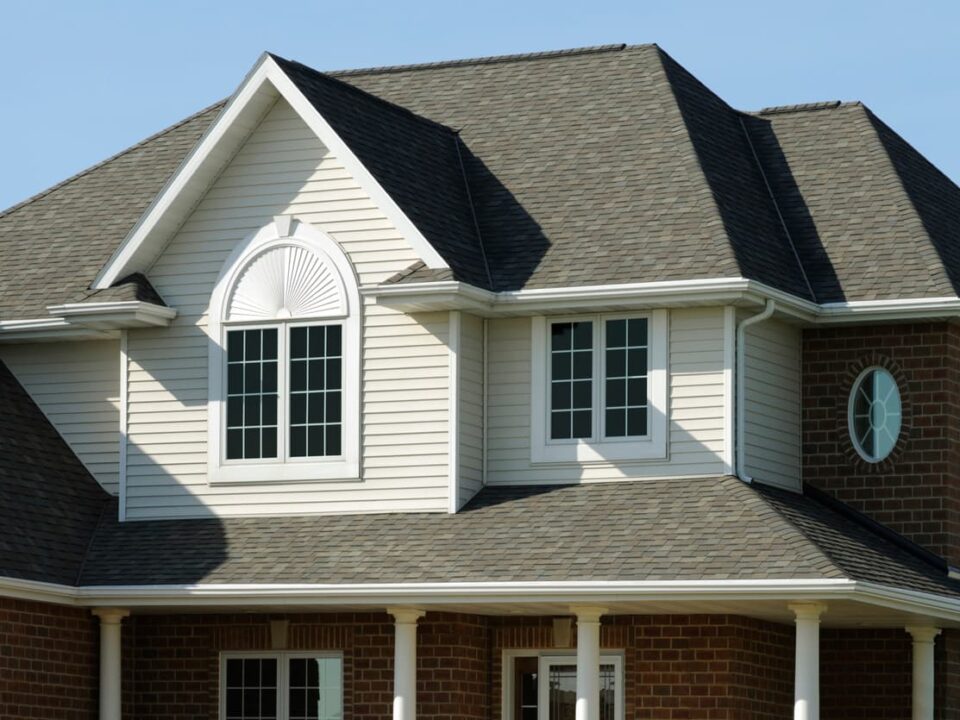
Exterior Home Renovations That Add Curb Appeal and Value
February 26, 2021
What Should an Accurate Roofing Estimate Include?
March 9, 2021When you are researching your new roof, you may be focused on the shingles. That’s the part of the roof that we see, and that’s the part you know you have to make decisions about materials. However, a new roof involves a whole roof system. Roof underlayment is an important part of the whole project and does a lot of the work in keeping your home protected.

What is Roof Underlayment?
Roof underlayment is installed directly on your roof deck, before laying the shingles. It is a waterproof or water-resistant barrier that adds a layer of protection from severe weather. The roof underlayment actually does a lot of the work in keeping your roof leak free. A good underlayment should be used, at minimum, at the eaves and valleys, around protrusions such as chimneys and skylights, and on low slope areas. Roofing underlayment should be used for the entire roof in areas where the winter weather makes roofs prone to ice damming. There are several different options for roof underlayment.
What Materials are Options for Your New Roof?
There are several main types of material for roofing underlayment. Some are waterproof, while others are water-resistant.
Asphalt-Saturated Felt
Asphalt-saturated felt is water-resistant. This was the standard in roof underlayment in the early 2000s. This underlayment is usually referred to as tar paper or felt paper. The flexible base layer is saturated with asphalt while providing water resistance. It is applied throughout the whole roof.
Synthetic Underlayment
Synthetic underlayment is also saturated in asphalt and is water-resistant. It is the most popular underlayment. It is also applied throughout the whole roof deck.
Rubberized Asphalt Underlayment
Rubberized asphalt underlayment is waterproof, not simply water-resistant. It is more expensive due to the higher percentage of asphalt and rubber polymers. It has a special backing that creates the waterproof seal between the underlayment and the roof deck. In areas with severe weather, this underlayment can protect the more vulnerable parts of the roof deck from water damage.
Why is Roof Underlayment Important When Installing a New Roof?
Shingles alone can’t match the protection that roofing underlayment provides. Shingles reflect the sun and block precipitation, which is important to a quality roof. But shingles alone simply can’t do the job that a complete roof installation will. Shingles overlap and aren’t sealed at the corners. Shingles can be lifted or damaged by bad weather, and they are vulnerable to age. Therefore, a water-resistant underlayment provides the moisture barrier and protection that your roof needs during and after installation. A roof underlayment – even without shingles – can stand up to extreme weather.
In addition, roofing underlayment is important to your warranty. Many warranties are contingent on using a quality roof underlayment. Your roofing contractor should make sure that you understand your warranty details and how your underlayment factors in.
If you are installing a new roof you owe it to yourself with this big investment to do all you can in making sure your roof is as strong as possible, and that means paying attention to your roofing underlayment. The quality of your roofing underlayment matters, and your roofing contractor can help guide you in the right direction. Contact Armorvue Home Exteriors for a virtual appointment and a free estimate of a new roof for your home.
Subscribe to ARMORVUE Home Exteriors’s Blog
Get ARMORVUE Window & Door’s latest articles straight to your inbox. Enter your name and email address below.




